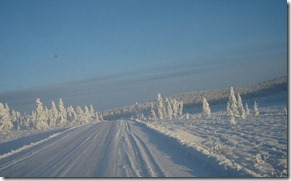Gas locked inside Siberia's frozen soil and under its lakes has been seeping out since the end of the last ice age 10,000 years ago. But in the past few decades, as the Earth has warmed, the icy ground has begun thawing more rapidly, accelerating the release of methane — a greenhouse gas 23 times more powerful than carbon dioxide — at a perilous rate. The thawing of permafrost could become the epicenter of climate change. 1.5 trillion tons of carbon, locked inside icebound earth since the age of mammoths, is a climate time bomb waiting to explode if released into the atmosphere. Total carbon storage here is like all the rain forests of our planet put together. Global warming is amplified in the polar regions. What feels like a modest temperature rise is enough to induce Greenland glaciers to retreat,  Arctic sea ice to thin and contract in summer, and permafrost to thaw faster, both on land and under the seabed. Yet awareness of methane leaks from permafrost is so new that it was not even mentioned in the seminal 2007 report by the Intergovernmental Panel on Climate Change, which warned of rising sea levels inundating coastal cities, dramatic shifts in rainfall disrupting agriculture and drinking water, the spread of diseases, and the extinction of species. Studies indicate that cold-country dynamics on climate change are complex. The Arctic Monitoring and Assessment Program, a scientific body set up by the eight Arctic rim countries, says overall the Arctic is absorbing more carbon dioxide than it releases. But Methane is a different story according to their 2009 report. The Arctic is responsible for up to 9 percent of global methane emissions. Other methane sources include landfills, livestock, and fossil fuel production. In some places, so much methane is leaking from holes in the sediment at the bottom of one lake that “on some days it looked like the lake is boiling," according to Katey Walter Anthony of the University of Alaska Fairbanks who has been measuring methane seeps in Arctic lakes in Alaska, Canada, and Russia for 10 years. More than 50 billion tons could be unleashed from Siberian lakes alone, more than 10 times the amount now in the atmosphere.
Arctic sea ice to thin and contract in summer, and permafrost to thaw faster, both on land and under the seabed. Yet awareness of methane leaks from permafrost is so new that it was not even mentioned in the seminal 2007 report by the Intergovernmental Panel on Climate Change, which warned of rising sea levels inundating coastal cities, dramatic shifts in rainfall disrupting agriculture and drinking water, the spread of diseases, and the extinction of species. Studies indicate that cold-country dynamics on climate change are complex. The Arctic Monitoring and Assessment Program, a scientific body set up by the eight Arctic rim countries, says overall the Arctic is absorbing more carbon dioxide than it releases. But Methane is a different story according to their 2009 report. The Arctic is responsible for up to 9 percent of global methane emissions. Other methane sources include landfills, livestock, and fossil fuel production. In some places, so much methane is leaking from holes in the sediment at the bottom of one lake that “on some days it looked like the lake is boiling," according to Katey Walter Anthony of the University of Alaska Fairbanks who has been measuring methane seeps in Arctic lakes in Alaska, Canada, and Russia for 10 years. More than 50 billion tons could be unleashed from Siberian lakes alone, more than 10 times the amount now in the atmosphere.
November 28, 2010
Subscribe to:
Post Comments (Atom)


No comments:
Post a Comment